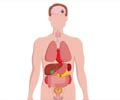
‘A gene associated with preeclampsia has been identified by researchers.’
Tweet it Now
“Medicine has made little to no progress in understanding and treating preeclampsia, and that is reflected in high mortality and complication rate among mothers and newborns,” said Dr. Hare, principal investigator on the study and director of the Miller School’s Interdisciplinary Stem Cell Institute. “Now, we have discovered an animal model for the syndrome, which is already providing new information into how we might treat it.” Preeclampsia causes high blood pressure in mothers, typically in their third trimester, and in some cases generates organ damage, driving higher mortality in mothers and babies, as well as premature births. In addition, while some women fully recover, others face elevated cardiovascular risks for years after their pregnancies.
Though preeclampsia is a complex disease, the study found that at least one potential cause is quite simple – a problem in the GSNOR gene.
Many enzymes undergo a process called nitrosylation, during which a nitric oxide (NO) molecule is attached to the enzyme, increasing its activity. GSNOR removes NO molecules from these enzymes, returning them to a less active state.
GSNOR performs this function on many enzymes, giving it a major impact on cell biology. As a result, when defects in the gene impair GSNOR function, or eliminate the protein entirely, widespread increases in nitrosylation can drive high blood pressure and other preeclampsia-associated effects. Using a GSNOR-deficient mouse model has given the researchers tremendous opportunities to investigate the disease, identify biomarkers and test possible treatments.
Advertisement
“Hispanic and African American populations have increased incidence of preeclampsia,” said Dr. Kulandavelu, Assistant Research Professor in the Department of Pediatrics and first author on the paper. “This has been well-established, but we don't really know why. Our goal now is to analyze some of the placentas we’ve collected and find markers that could identify women who may be predisposed to preeclampsia and start early treatment.”
Advertisement
“When we look at preeclampsia, we’re finding there are many different subtypes,” said Dr. Kulandavelu. “So there could be women with a variety of causes, including increased inflammation, oxidative stress or a genetic disorder, as well as problems with nitrosylation.”
While a defective GSNOR gene may be one of several potential mechanisms causing preeclampsia, identifying this issue and developing the first robust animal model for the disease is an important step towards better care.
“In one fell swoop, we took away two or three layers of the onion and provided major insights into preeclampsia’s causes, as well as a potential treatment,” said Dr. Hare. “That doesn't mean it's the only thing going wrong, but it does provide critical information for a pathway that is playing a major role in at least some women.”
Source-Eurekalert















